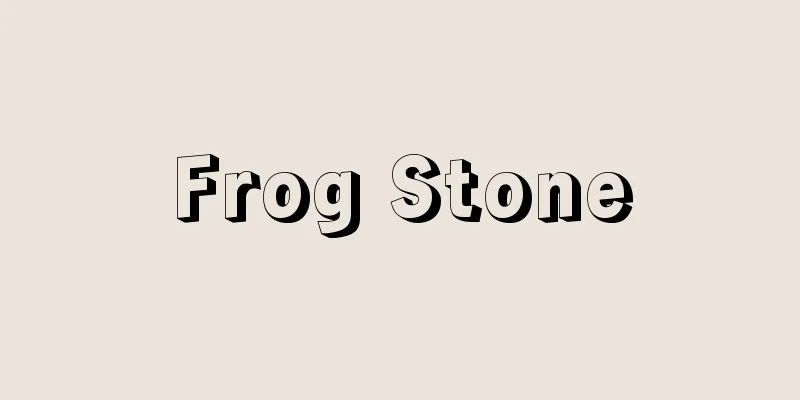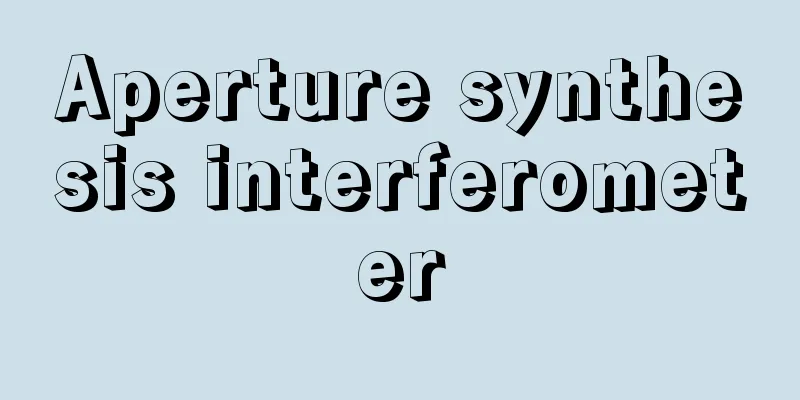French - French

|
Like Italian, Spanish, and Romanian, French is a Romance language that dates back to Latin, an Indo-European language. In addition to France (about 60 million people) and its overseas territories, French is spoken and considered one of the official languages in Belgium (about 4.1 million French speakers), Switzerland (about 1.4 million), Luxembourg (about 440,000), Canada (about 7.4 million), and some former French African countries such as Mauritania, Madagascar, Rwanda, and Cameroon. It is also the only official language in 11 countries that became independent from former French and Belgian territories, including Haiti, Monaco, Mali, Niger, Senegal, Burkina Faso (formerly Upper Volta), Togo, Gabon, Côte d'Ivoire (Ivory Coast), and the Democratic Republic of the Congo (formerly Zaire) (2002). In these African countries, French is taught from elementary school onwards and is the common language, but it is difficult to determine the number of people who regularly use French. It is estimated that there are more than 100 million French speakers. Although it is not an official language, French is also spoken in the former French colonies of Tunisia, Algeria, and Morocco, and many immigrants and workers from these three Maghreb countries, which face the Mediterranean Sea in North Africa, have flowed into France. French is also one of the official languages of the United Nations, the European Union (EU), and UNESCO. As a cultural lingua franca, it is widely studied alongside English, Russian, Arabic, and Chinese. The oldest document in French dates back to the Oath of Strasbourg, which was signed in 842 between Charlemagne's two grandsons, King Charles the Bald and King Louis, and their respective legions. This is the oldest document among the Romance languages, and many documents have been left behind in each century since then, making French an important language in linguistic history because it allows us to continuously trace the development of the language over the 2,000 years since Old Latin. [Matsubara Shuichi] French as an international languageFrench had already become the second most intellectual language in Europe after Latin in the 12th and 13th centuries, and its literary works were translated into many languages beyond the Romance language world. There were medieval German, Icelandic, and Dutch translations of the 11th century heroic poem The Song of Roland and the 12th century The Romance of Tristan, and in the 13th century, the Italian Brunetto Latini wrote The Book of Knowledge in French, and Marco Polo's Travels of Marco Polo were also widely read in French, so French already had the character of an international language. In the 15th and 16th centuries, French declined somewhat in the face of the rise of Italian and Spanish, but French aristocrats who discovered the Italian Renaissance during the Italian Wars of the 16th century adopted Italian culture and married Italian women, bringing the salon customs to the upper classes and increasing the desire for refined conversation. In the second half of the 17th century, with the rise of classicism, French was refined as the language of reason and social interaction. French was established through works such as Beaujela's Memoirs of the French Language (1647), Grammar (1660) written by Arnaud, a leader of the Port Royal movement, together with Claude Lancelot (1615-1695), and Les Academies Françaises' Dictionary of the French Language (1694). It became the common language of the upper classes of Europe, centered around the Versailles Palace of the Louis Dynasty. Not only was French used in diplomatic negotiations, but in the 18th century it replaced Latin as the common language of scholars. The academic academies of Berlin and St. Petersburg also published their journals in French, Leibniz wrote his Monadology in French, and Frederick II, King of Prussia, wrote his diary in French. French has been the official language of diplomatic documents since the Treaty of Westphalia in 1648, which ended the Thirty Years' War, and the peace treaty of the Russo-Japanese War was also written in French, but from the Treaty of Versailles in 1919, English began to be used alongside French. However, if there is any doubt about the wording, the French text shall prevail. English has been gaining international influence since the Second World War, but since the Berne International Postal Convention states that French is the official text, postal mail and delivery can be written in French from anywhere. What has made French an international language is that French has been polished to be a beautiful language that is easy to listen to and understand even for women who have not received a classical education, as shown by the existence of salons since the 17th century that were held under the influence of Italian women, and academies that were also established following the example of Italy, and that words have been logically defined and organized in an effort to maintain objective norms, and that the tradition has been maintained from Voltaire to modern times, such as Anatole France, Gide, Valéry, and Camus, with classical works by Corneille, Molière, and Racine, making it relatively easy to achieve a homogeneous language with a certain amount of study, and making it possible to avoid ambiguity in grammar when necessary. After World War II, English spread as an international language due to the technological and economic superiority of the United States, but French as an international common language will likely maintain its position as an intellectual international language due to its clarity and uniformity of norms. [Matsubara Shuichi] Features of FrenchModern French has 16 vowels, including four nasal vowels, and 20 consonants, including three semivowels, but the vowels are pronounced clearly with high tension, do not become diphthongs even when extended, and two or more consonants are not pronounced together. The accent is placed on the last vowel in an individual word, and on the end of a group of words that are pronounced in a row in a sentence, but all syllables are pronounced clearly regardless of whether they are accented, making it easy to hear. In words, unpronounced final consonants are restored when they are placed before a vowel in a group of words that are meaningfully coherent, and there is a phenomenon called liaison, which avoids following vowels, and it is a characteristic of French that the spelling of words is taken into consideration when pronouncing the words. Nouns are divided into masculine and feminine, with the sun and sky being masculine (le soleil, le ciel) and the moon and earth being feminine (la lune, la terre). Case declension remains only for pronouns, as in English. As a Romance language, verbs are rich in person and tense declension, but they have been simplified in both pronunciation and usage, and their usage is organized logically. The syntax is also highly stable, with the subject-verb-verb complement word order, and modifiers follow a descending word order, with adjectives placed after nouns and adverbs placed immediately after verbs whenever possible, and the language has been developed to make it easy for listeners to understand one word after another according to the word order. Therefore, among European languages, it has a strong artificial language character, and while German uses different verbs depending on the manner, such as fahren, reiten, kriechen, and klettern, French adds analytical complements to the verb "aller" and says "aller en voiture, en train, en bateau (go by car, by train, by boat), aller à cheval (by horseback), aller à quatre pattes (on all fours), and aller en grimpant (crawl up)." While English can distinguish between faintly shining lights by manner, such as glow, glisten, glint, glimmer, and gleam, French only has the verb "luire." French tends to place more importance on intellectual information transmission than on emotions and feelings. Therefore, there are very few onomatopoeic and sound-impressive words such as korokoro, gorogoro, katakata, nosonoso, girigiri, and zawazawa, which are abundant in Japanese, and there is no choice but to express the situation by analyzing it. This is the result of the conscious efforts of the French people to turn their language into an intellectual tool, and the strong interest of the people in a beautiful and refined national language is also a characteristic of French. For example, even after the Second World War, France continued to operate many schools abroad to popularize the French language, sent teachers, and even put a professor at a national university on leave to work on establishing "basic French," and was enthusiastic about developing audiovisual teaching materials. It also made national efforts such as restricting the use of English words, having translations reviewed, and publishing them in the official gazette. On the other hand, it cannot be denied that the gap between popular language and refined language has widened. [Matsubara Shuichi] History of the French LanguageEmergence and EstablishmentThe languages of the Ligurians and Iberians, the indigenous people of France, have not survived beyond guesses in a few place names. The Mediterranean coast of southern France was colonized by Phoenicians and Greeks early on, and place names such as Nice, Marseille, and Monaco are preserved from Greek. Southern France was part of the Narbonne province of the Roman Empire, but as a result of Caesar's conquest of northern France between 58 and 51 BC, it came completely into the Roman sphere of influence, and Latin first began to spread among the residents, who spoke Gaul, a Celtic language, mainly in the cities. By the 5th century AD, the Gaulish language had disappeared except in remote mountain areas, but many place names, as well as names of trees, plants and animals that were known in Latin before the conquest (Paris, Lyon, chêne (oak), bouleau (birch), cheval (horse), alou (>alouette, skylark) and names of things that originated in Celtic culture (lieue (village), arpent (half an acre), tonneau (barrel), charrue (plow), bercer (to rock, it is believed that the Celts were employed as nannies), changer) are believed to be of Celtic influence. Traces of the vigesimal system in French numerals (quatre-vingts 80 (4 x 20)) are also believed to be of Celtic influence, and some scholars believe that the pronunciation of u as yu instead of u is also of Celtic influence. The Latin spoken by the common people in Roman territories such as France, Spain, and Romania surprisingly remained uniform until the 5th century, and the emergence of articles, the distinction between long and short vowels, the decline of case declension, and the emergence of new verb systems are reflected in all Romance languages. However, when the Western Roman Empire collapsed in 476 and each region was placed in a different social and cultural situation, dialectization proceeded separately in each region, and Romance languages began to develop into Italian, Spanish, French, Romanian, etc. As a result of the migration of Germanic peoples, the changes were the greatest in northern France, which was strongly influenced by the Franks, and the Oi group was formed, in contrast to Occitan in the south, which was deeply Romanized. It is said that the Franks and the conquered Gallo-Romans became intermingled and it became impossible to hold court by common law in the 9th century, but by that time the Franks had forgotten Frankish, which belongs to the Germanic languages, and were speaking only Oi. However, the influence of Germanic languages was strong, bringing with it many color names, military terms, and everyday terms, as well as the restoration of the sound "h" that had already been lost in Latin, and the bilabial sound "w" that remains in today's "g." In this way, the Gallic Romance languages became the French language that remains in the "Oath of Strasbourg," the oldest document in the French language. [Matsubara Shuichi] Old FrenchThe Oiré, the origin of French, had regional differences, and in the 12th century, the Picardian, Norman, Champagne, Lorraine, and Western dialects were recognized. Of these, the Picardian and Norman dialects were influential as literary languages, but with the expansion of the Capetian monarchy centered in Paris, a common language that neutralized these dialects was gradually created. This is sometimes called the Francien dialect. In the 11th century, the oldest saint's life in French literature was left in verse, and in particular, the "Life of Saint Alexis," included in the "Laboratory of Sanctus," printed in Kazusa (Minamishimabara City, Nagasaki Prefecture) in Japan in 1592 (Bunroku 1), was a masterpiece of Old French written at the end of the 11th century, and has been revised many times since then. The Song of Roland, which is believed to have been written after the First Crusade in 1092, is also a masterpiece of medieval French literature, but its oldest manuscript was written in Anglo-Norman, the dialect of French spoken in England. Étienne Boileau's Records of Professions, a 13th century directory of Parisians, was also written in the Picard dialect. The 12th and 13th centuries were the heyday of French verse literature, and many of its heroic poems and narrative poems gained European fame and were translated and imitated in various countries. This medieval French had a distinction between subject and object for nouns, a flexible word order, and a wide variety of verb conjugations. The Norman dialect, brought to England by William, Duke of Norman, became the common language of the upper classes, and French was used in the English Parliament until it was abolished by Edward III in 1362, exerting a profound influence on the English language. This Norman dialect lost its case inflections early on, introduced diphthongs and other patterns, and moved away from other dialects on the continent, so it is called the Anglo-Norman dialect, but it was a very active literary region and many works have been left behind. [Matsubara Shuichi] Middle FrenchThe 14th and 15th centuries in France were a time of turmoil due to the Hundred Years' War and plagues, and the language underwent drastic changes. Case declension disappeared, verb conjugation decreased, the subject-verb-object word order became established, and pronouns began to appear as subjects. Francien became the standard language, and by the end of the 15th century dialects were no longer used in writing. The borrowing of classical words in translations from Latin led to an increase in legal and scholarly terms, and scribes educated in classical languages brought Latin-style spellings to French writing, making it more complex. The rediscovery of classical Greek and Greek culture in the 16th century also enriched the French vocabulary. The Renaissance, along with the fascination with Italy, Greece, and Rome, brought about a movement to make French as good as these languages. In 1539, Francis I ordered the abolition of Latin and the use of French only in courts and legal documents by the Edict of Birrers-Cotterets. Calvin published his Institutes of the Christian Religion, which he had written in Latin, in French in 1541, and Du Bellay wrote A Defense and Exaltation of the French Language in 1549. [Matsubara Shuichi] Modern FrenchThe 17th century was a time of streamlining the French language, which had become too rich. Thanks to the efforts of the salons and academies mentioned above, the French vocabulary shrank, but its clarity increased. In the 18th century, with the development of industry and manufacturing, scientific and technical terms were added to the classical French of the 17th century, while Rousseau contrasted the expression of individuality, which was inherited by the rich romantic expression of emotion by Chateaubriand, Hugo, Gautier and others after the French Revolution. When the National Army was created during the revolution, it became clear that the standard language was not understood by the people, and after the revolution, efforts were made to spread the use of French through military service and compulsory education. With the industrial reforms following the July Revolution of 1830, a tendency towards a preference for English also emerged. During the Second Empire, France showed an interest in the East, and came into contact with the Edo Shogunate, providing military advice and technology, and maintaining contact until the Meiji era. As a result, words such as gaiter, sabre, bivouac, chapeau, soap, and barrican (shop name) were introduced into the Japanese language. In the 19th century, novels replaced poetry as the mainstream of literature, and novels, a means of expressing the romantic ego, were introduced to Japan as modern literature, and cutting-edge literature has continued to be introduced to Japan since then. Many Japanese studied in France in the Meiji era, as it was an advanced country in military and legal systems, but during the Third Republic, France was seen as a country of freedom and civil rights, and an elegant country with a thriving art and fashion industry, and words such as drawing, prêt-à-porter, and chic were introduced into the Japanese language. [Matsubara Shuichi] "General Linguistics and French Linguistics" by Charles Bailly, translated by Kobayashi Hideo (1970, Iwanami Shoten) " ▽ "Characteristics of the French Language" by Albert Dauzat, translated by Sugi Fujio, Tanabe Tamotsu, et al. (1982, Taishukan Shoten)" ▽ "Port-Royal Grammar: General and Rational Grammar" by C. Lancelot and A. Arnaud, translated by Minamidate Hidetaka (1982, Taishukan Shoten)" ▽ "In Search of the Heart of French Language" by Morimoto Hideo and Hotta Gohiro (1983, Kobundo Publishing)" ▽ "Sociology of the French Language: An Invitation to the History of the French Language" by Morimoto Hideo (1988, Surugadai Publishing)" ▽ "History of the French Language" by Yamada Hideo, revised and expanded edition (1994, Surugadai Publishing)" ▽ "For Students of the History of the French Language" by Peter Ricardo, translated by Ito Tadao (1995, Sekaishisosha) ▽ "French in Japanese History - Japanese-French Cultural Exchange in the Late Edo and Meiji Periods" by Miyanaga Takashi (1998, Hakusuisha) ▽ "In Praise of Philosophy - Thinkers Who Wrote in French" by Michel Serres, translated by Yoneyama Chikano, Wada Yasushi, and Shimizu Takashi (2000, Hosei University Press) ▽ "Problems of French Linguistics" by Sémeion, Tokyo University of Foreign Studies Group (2001, Sanshūsha) ▽ "Learning French Through Culture and History" by Ogura Hiroshi (2001, Maruzen) ▽ "An Introduction to French" by Kobayashi Tadashi (Kodansha Gendai Shinsho) ▽ "History of the French Language" by Jacques Chaulan, translated by Kawamoto Shigeo and Takahashi Hideo (Hakusuisha, Quessais-jes Bunko) ▽ "What kind of language is French?" by Tamotsu Tanabe (Kodansha Academic Library)" "The Japanese Society of French Language and Literature, edited by the French Language and Literature Society, various annual editions (Nichigai Associates)" [References] | | | | | | | | | | | | | |Source: Shogakukan Encyclopedia Nipponica About Encyclopedia Nipponica Information | Legend |
|
イタリア語、スペイン語、ルーマニア語などと同じく、インド・ヨーロッパ語の一つであるラテン語にさかのぼるロマンス語の一つ。フランス(約6000万人)と海外領土のほか、ベルギー(フランス語人口約410万人)、スイス(同約140万人)、ルクセンブルク(同約44万人)、カナダ(同約740万人)、モーリタニア、マダガスカル、ルワンダ、カメルーンなどの旧フランス領アフリカ諸国の一部で話され公用語の一つとされ、ハイチ、モナコ、アフリカ大陸のマリ、ニジェール、セネガル、ブルキナ・ファソ(旧オートボルタ)、トーゴ、ガボン、コートジボワール(象牙(ぞうげ)海岸)、コンゴ民主共和国(旧ザイール)など旧仏領、旧ベルギー領からの独立国のうち11か国では唯一の公用語となっている(2002)。これらのアフリカ諸国では小学校からフランス語で教育が行われ、共通語となっているが、フランス語を常用している人数を確定することはむずかしい。推定では1億人以上とされる。また公用語とはされていないが旧フランス領であったチュニジア、アルジェリア、モロッコでもフランス語は通用し、北アフリカで地中海に面するこれらマグレブ三国からは移民また労働者が多くフランスに流入している。国際連合、ヨーロッパ連合(EU)、ユネスコでもフランス語は公用語の一つとなっている。文化的共通語としては英語、ロシア語、アラビア語、中国語と並んで広く学ばれている。 フランス語の最古の文献は、842年にカール大帝の2人の孫、カール禿頭(とくとう)王とルートウィヒ王の間とそれぞれの軍団が交わした『ストラスブールの誓い』にさかのぼるが、これはロマンス諸語のなかで最古の文献であり、以後、各世紀に多くの文献が残されていて、古ラテン語以来の2000年の発展を連綿とたどれる点で言語史学上も重要な言語になっている。 [松原秀一] 国際語としてのフランス語フランス語はすでに12、13世紀にはラテン語に次ぐヨーロッパの教養語となり、その文学作品はロマンス語圏を越えて各国語に訳されている。11世紀の武勲詩『ロランの歌』、12世紀の『トリスタン物語』などの中世ドイツ語訳、アイスランド語訳、オランダ語訳などがあり、また13世紀にはイタリア人ブルネット・ラティーニが『知識宝典』をフランス語で書き、マルコ・ポーロの『東方見聞録』もフランス語で広く読まれるというように国際語の性格をすでにもっていた。15、16世紀にはイタリア語、スペイン語の隆盛の前にやや衰えたが、16世紀のイタリア戦争でイタリア・ルネサンスを発見したフランス貴族がイタリア文化を取り入れ、イタリア女性と縁組みしたため、サロンの風習が上流階級にもたらされ、会話の洗練への志向が高まった。17世紀後半、古典主義の勃興(ぼっこう)とともに、フランス語は理性のことば、社交のことばとして磨かれた。ボージュラの『フランス語覚え書』(1647)をはじめ、ポール・ロアイヤル運動の指導者アルノーがランスロClaude Lancelot(1615―1695)とともに著した『文法』(1660)、アカデミー・フランセーズによる『アカデミー・フランセーズ国語辞典(アカデミー辞書)』(1694)などによって整備され、ルイ王朝のベルサイユ宮殿を中心にヨーロッパの上流社会の共通語となった。外交交渉にはフランス語が使われるばかりか、18世紀にはラテン語にかわって、学者の共通語となった。ベルリン、ペテルブルグのアカデミーでも紀要はフランス語で刊行され、ライプニッツも『モナド(単子)論』をフランス語で著し、プロイセン王フリードリヒ2世も日記をフランス語で書いているほどである。外交文書でフランス語が公用語となったのは、三十年戦争を終結させる1648年のウェストファリア条約以来のことで、日露戦争の講和条約もフランス語が正文であったが、1919年のベルサイユ講和条約からフランス語に並んで英語も使われるようになった。ただし文言に疑義がある場合はフランス文によるとしている。第二次世界大戦以後国際的に英語の勢力が増しているが、ベルンの国際郵便条約ではフランス語が正文であるので、どこからでも郵便の上書きや届けはフランス語で書ける。 フランス語を国際語にしたのは、イタリア婦人の影響のもとに開かれた17世紀以来のサロンや、同じくイタリアに倣ってつくられたアカデミーの存在が示すように、フランス語が古典語教育を受けない女性にも聞きやすくわかりやすい美しいことばになるように磨かれ、客観的規範性を保とうという努力によって、単語が論理的に定義づけられ整理されていること、コルネイユ、モリエール、ラシーヌらによる古典作品をもち、その伝統がボルテールからアナトール・フランス、ジッド、バレリー、カミュら現代まで保たれていて、一定の学習によって比較的容易に同質の言語に到達できることと、必要によって文法もあいまいさを避けることを可能にしている点があげられよう。第二次世界大戦後、アメリカの技術的、経済的優位により英語が国際語として広まったが、国際共通語としてのフランス語は明快さ、規範の均一なことなどにより知的国際語の地位を保っていくであろう。 [松原秀一] フランス語の特徴現代フランス語は、四つの鼻母音を含む16の母音と三つの半母音を含む20の子音をもつが、母音は緊張度が高く明瞭(めいりょう)に発音され、延ばしても二重母音化せず、2個以上の子音が固まって発音されることがなく、アクセントは個々の単語では最後の母音、文中では一続きに発音される語群の最後に置かれるが、アクセントの有無にかかわらずすべての音節が明瞭に発音されるので聞き取りやすい。単語では、発音されない語末の子音が意味上のまとまりのある語群のなかでは母音の前になると復活し、母音が続くことを避けるリエゾンliaisonという現象をもち、音声化に単語の綴(つづ)り字が意識されるのはフランス語の特徴である。 名詞には男性、女性の区別があり、太陽、空はle soleil, le cielと男性名詞、月、大地はla lune, la terreと女性名詞というようにあらゆる名詞に性の区別がある。格変化は英語と同じく代名詞にしか残っていない。動詞はロマンス語として人称変化、時制変化に富むが、発音上も用法上も単純化の道をたどってきていて、用法も論理的に整理されている。統辞法も主語―動詞―動詞補語の語順の安定度が高く、修飾語も形容詞は名詞のあと、副詞もできるだけ動詞の直後に置かれる下降語順をとり、語順に従って次々と理解が聞き手に形成されやすいように発達させられてきた。したがってヨーロッパ諸語のなかでも人工語的性格が強く、ドイツ語ではfahren, reiten, kriechen, kletternなどと様態によって動詞が使い分けられるのに対して、フランス語ではallerという動詞に分析的に補語をつけてaller en voiture, en train, en bateau(車で、汽車で、船で行く)、aller à cheval(馬で)、aller à quatre pattes(四つんばいで)、aller en grimpant(はい上がる)といい、英語がglow, glisten, glint, glimmer, gleamなどとほのかに光るのを様態で区別できるのに、フランス語にはluireという動詞をもつのみであるように、フランス語は感情や情感よりも理知的な情報伝達に重きを置く傾向がある。したがって、日本語に豊かなコロコロ、ゴロゴロ、カタカタ、ノソノソ、ギリギリ、ザワザワといった擬態語、擬声語はきわめて少なく、事態を分析して表現するほかはない。これは、フランス人が自分たちのことばを意識的に知的な道具にするために努力してきた結果であり、国民に美しく洗練された国語に対する関心が高いこともフランス語を特徴づけている。たとえばフランスが第二次世界大戦後もフランス語の普及のため外国に多くの学校を経営し、教師を送り、国立大学の教授を休職させてまで「基礎フランス語」の制定にあたらせ、視聴覚教材の開発に意欲的なことや、英語の借用を制限し、訳語を審議させ、官報に公布するなど国家的努力をしているのにもみられる。しかし反面、民衆語と洗練されたことばの距離を大きくしたことも否めない。 [松原秀一] フランス語の歴史発生と成立フランスの先住民族であったリグリア人、イベリア人のことばは、わずかな地名に推測されるのみで残っていない。南フランスの地中海沿岸は早くからフェニキア、ギリシアの植民が行われたので、ニース、マルセイユ、モナコなどの地名がギリシア語から残された。南フランスはローマ帝国のナルボンヌ属領となっていたが、北フランスも紀元前58~前51年カエサルの征服の結果、完全にローマの勢力範囲に入り、まず都市を中心にラテン語が、ケルト語の一つであるガリア語を話していた住民の間に浸透していった。紀元後5世紀にはガリア語は山間僻地(へきち)を除いては消滅したらしいが、多くの地名のほか、征服以前からラテン語に知られていた樹木名、動植物名(パリ、リヨン、chêne〔柏(かしわ)〕、bouleau〔しらかば〕、cheval〔馬〕、alou〔>alouette,ひばり〕)、ケルト文化に由来する事物の名(lieue〔里〕、arpent〔半エーカー〕、tonneau〔樽(たる)〕、charrue〔鋤(すき)〕、bercer〔揺する、ケルト人が子守に雇われたことが推定される〕、changer〔換える〕)など、かなりの数がケルト系とされる。フランス語の数詞にみられる二十進法の痕跡(こんせき)(quatre-vingts 80〔4×20〕)もケルトの影響とされ、学者によってはuがウでなくユと発音されるのもケルト語の影響と考える。 フランスをはじめスペイン、ルーマニアなどのローマ属領で話されていた民衆のラテン語は、5世紀ごろまでは意外に統一を保ち、冠詞の発生、母音の長短の区別、格変化の衰退、新たな動詞体系の発生はすべてのロマンス語に反映している。しかし476年に西ローマ帝国が崩壊し、各地域が社会的、文化的に異なった状況に置かれると、それぞれの地方で方言化が別々に進行し、ロマンス語はそれぞれイタリア語、スペイン語、フランス語、ルーマニア語などへの発展の道をたどり始める。ゲルマン人の移動の結果、フランク人の影響を強く受けた北フランスでは、変化がロマンス語のなかでももっとも大きく、ローマ化の深かった南のオック語に対し、オイル語群を形成していった。フランク人と被征服ガロ・ロマン人の混交が進み、人定法による裁判ができなくなったのは9世紀とされるが、このころには、フランク人はゲルマン語に属するフランク語を忘れ、オイル語のみを話すようになっていた。しかしゲルマン語の影響は強く、色名、軍事用語、生活用語を多くもたらし、発音上もラテン語ですでに失われていたhを復活し、いまのg音に残る両唇音wなどをもたらした。こうしてガリアのロマンス語は、フランス語最古の文献とされる『ストラスブールの誓い』に残るフランス語となっていったのである。 [松原秀一] 古フランス語このフランス語の祖のオイル語は地方差があり、12世紀にはピカール方言、ノルマン方言、シャンパーニュ方言、ロレーヌ方言、西部方言などが認められる。このうち文学語としてピカール方言、ノルマン方言が勢力があったが、パリを中心とするカペー王権の伸張とともに、これらの諸方言を中和した共通語がしだいにつくられた。これをフランシアン方言francienとよぶことがある。11世紀にはフランス文学最古の聖者伝が韻文で残され、とくに1592年(文禄1)イエズス会士によって日本の加津佐(かづさ)(長崎県南島原(みなみしまばら)市)で印刷された『サンクトスの御作業』にも含まれている『聖アレクシス伝』は11世紀末作の古フランス語の傑作であり、その後、何度も改作されている。1092年の第一次十字軍後につくられたと推定される『ロランの歌』も、中世フランス文学の傑作であるが、最古の写本はイギリスで行われたフランス語の方言アングロ・ノルマン語で書かれている。13世紀のパリの人名録といえるエティエンヌ・ボワローの『職業録』も、ピカール方言で書かれている。12、13世紀はフランス韻文文学の最盛期で、多くの武勲詩、物語詩はヨーロッパ的名声を博し、各国で訳され、模倣された。この中世のフランス語は、名詞に主格、目的格の区別があり、語順も浮動性があり、動詞変化も豊かであった。ノルマン公ウィリアムによってイギリスにもたらされたノルマン方言は、上層階級の共通語となり、1362年エドワード3世が廃止するまではイギリス議会ではフランス語が使われ、英語に深い影響を及ぼした。このノルマン方言は早くから格変化を失い、二重母音化をはじめ、大陸の他の方言から離れていくのでアングロ・ノルマン方言といわれるが、文学活動は盛んで多くの作品が残されている。 [松原秀一] 中期フランス語14、15世紀のフランスは、百年戦争や疫病で混乱期となり、言語の変化が甚だしくなった。格変化は消失し、動詞の変化も減るとともに、主語・動詞・目的語という語順が定着し、主語に代名詞が現れるようになった。フランシアンが標準語となり、15世紀末には方言は書きことばでは使われなくなり、ラテン語からの翻訳に伴う古典語の借用から、法律用語や学者語が増え、古典語の教育を受けた写字生がラテン語風綴(つづ)りをフランス語の表記にもたらし、綴り字が複雑化した。16世紀の古典ギリシア語、ギリシア文化の再発見も加わって、フランス語の語彙(ごい)は豊かにされた。ルネサンスは、イタリア、ギリシア・ローマの魅惑とともに、フランス語をいかにこれらの言語に劣らぬものにするかという運動をもたらした。フランソア1世は1539年ビレル・コトレの勅令で、法廷と法律文書にラテン語を廃し、フランス語のみを使うよう命じ、カルバンはラテン語で書いた『キリスト教綱要』を1541年にフランス語で発表し、1549年にはデュ・ベレーが『フランス語の擁護と顕揚』を著している。 [松原秀一] 近代フランス語17世紀は豊穣(ほうじょう)になりすぎたフランス語を整理する時期で、前述のサロンやアカデミーの努力でフランス語の語彙は縮小したが、明晰(めいせき)さは増大した。18世紀には産業と工業の発達で科学用語、専門用語が17世紀の古典フランス語に加えられ、他方ルソーにより個性の表現が対照され、フランス革命後のシャトーブリアン、ユゴー、ゴーチエなどによる豊かなロマン派の情感表現に受け継がれる。革命期に国民軍がつくられると、標準語が国民に通じないことが明らかとなり、革命後、兵役と義務教育によるフランス語の普及が図られることとなる。1830年七月革命後の産業改革から、英語好みの傾向も現れた。 第二帝政期に東洋に関心を示したフランスは、江戸幕府と接触し、軍事顧問、技術供与をはじめ、明治年間まで接触が保たれ、このため日本語にもゲートル、サーベル、ビバークbivouac、シャッポ、シャボン、バリカン(商店名)などの単語がもたらされた。19世紀に小説が詩にかわって文学の主流になり、ロマン派の自我の表現手段としての小説が近代文学として日本に紹介され、その後今日まで先端的文学が紹介され続けている。フランスは軍事、法制の先進国として多くの日本人が明治になると留学したが、第三共和政の時代にはフランスは自由民権の国、美術・服飾の盛んなエレガントな国ととらえられ、日本語にも、デッサン、プレタポルテ、シックなどの単語が入ってきている。 [松原秀一] 『シャルル・バイイ著、小林英夫訳『一般言語学とフランス言語学』(1970・岩波書店)』▽『アルベール・ドーザ著、杉冨士雄・田辺保ほか訳『フランス語の特質』(1982・大修館書店)』▽『C・ランスロー、A・アルノー著、南舘英孝訳『ポール・ロワイヤル文法 一般・理性文法』(1982・大修館書店)』▽『森本英夫・堀田郷弘著『フランス語の心をたずねて』(1983・高文堂出版社)』▽『森本英夫著『フランス語の社会学――フランス語史への誘い』(1988・駿河台出版社)』▽『山田秀男著『フランス語史』増補改訂版(1994・駿河台出版社)』▽『ピーター・リカード著、伊藤忠夫訳『フランス語史を学ぶ人のために』(1995・世界思想社)』▽『宮永孝著『日本史のなかのフランス語――幕末明治の日仏文化交流』(1998・白水社)』▽『ミッシェル・セール著、米山親能・和田康・清水高志訳『哲学を讃えて――フランス語で書いた思想家たち』(2000・法政大学出版局)』▽『東京外国語大学グループ「セメイオン」著『フランス語学の諸問題』(2001・三修社)』▽『小倉博史著『文化と歴史で学ぶフランス語』(2001・丸善)』▽『小林正著『フランス語のすすめ』(講談社現代新書)』▽『ジャック・ショーラン著、川本茂雄・高橋秀雄訳『フランス語史』(白水社・文庫クセジュ)』▽『田辺保著『フランス語はどんな言葉か』(講談社学術文庫)』▽『日本フランス語フランス文学会編『フランス語フランス文学研究文献要覧』各年版(日外アソシエーツ)』 [参照項目] | | | | | | | | | | | | | |出典 小学館 日本大百科全書(ニッポニカ)日本大百科全書(ニッポニカ)について 情報 | 凡例 |
<<: Archives Nationales of France
>>: Bank of France - French (English) Banque de France
Recommend
Quantum mechanics
In order to understand the phenomena of atoms, mo...
Unemployment countermeasures project - Shitsugyo Taisakujigyo
In a broad sense, it refers to unemployment relie...
Tannisho - Tannisho
A Buddhist book from the Kamakura period. One vol...
Mito-Sakura Road - Mito Sakura Road
A highway from the Edo period. It branches off at ...
Ohno School of Western Studies
…The domain schools included Heishokan in Maruoka...
Franz Weidenreich
German anatomist and anthropologist. He is especi...
Onokorojima Island
" Self-confidence Onokoro "Island" ...
Takeno Jōō
1502‐55 (Bunkai 2‐Kouji 1) A tea master from the l...
Prince Taruhito
A member of the imperial family from the end of th...
Differential equation
A differential equation is an equation that expre...
Art of the Azuchi-Momoyama period
In political history, the Momoyama period lasted f...
Capromys
…A general term for a large rodent mammal of the ...
White
〘Noun〙① The name of a color. The color of snow, sa...
costume ball
A costume ball is a ball that is worn by a person...
Mounier, Emmanuel
Born: April 1, 1905 in Grenoble [Died] March 22, 1...









